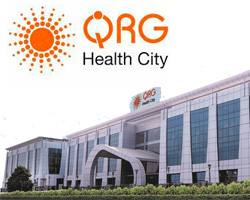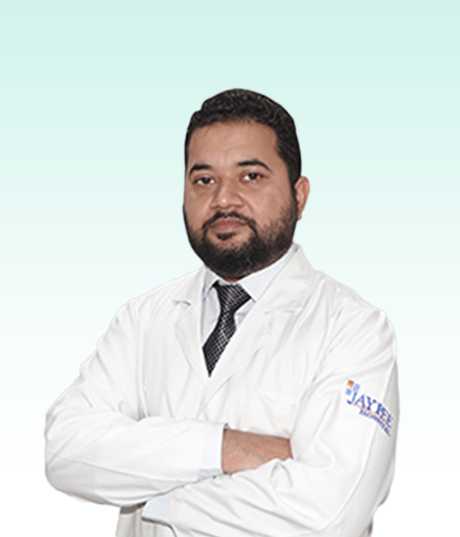Adenotonsillectomy
Adenotonsillectomy is a surgical procedure performed to remove both the adenoids and tonsils, which are clusters of tissue located at the back of the throat and the roof of the mouth, respectively. This procedure is commonly recommended to address various medical issues, including recurrent infections, breathing difficulties, and sleep-related problems

Who Needs Adenotonsillectomy
Adenotonsillectomy may be recommended for individuals who experience the following conditions or symptoms:
Recurrent Infections: Frequent or severe bacterial or viral infections of the tonsils and adenoids, such as strep throat or tonsillitis.
Enlarged Adenoids and Tonsils: Overly enlarged adenoids and tonsils that obstruct the airway and lead to breathing difficulties, including sleep apnea.
Chronic Ear Infections: When ear infections persist and are linked to adenoid and tonsil issues.
Sleep-Related Problems: Conditions like obstructive sleep apnea (OSA) or snoring that are caused or exacerbated by adenoid and tonsil enlargement.
When to See a Specialist
If you or your child experiences recurrent throat or ear infections, chronic snoring, breathing difficulties, or sleep disturbances, it’s essential to consult with an otolaryngologist (ear, nose, and throat specialist). They can evaluate your symptoms, medical history, and perform diagnostic tests to determine if adenotonsillectomy is appropriate.
Procedure
Pre-Operative Assessment: Before surgery, a thorough medical evaluation is conducted, including blood tests and anesthesia clearance.
Anesthesia: Adenotonsillectomy is typically performed under general anesthesia to ensure the patient is asleep and pain-free during the procedure.
Removal of Adenoids: The surgeon starts by removing the adenoids. This is often done through the mouth using specialized instruments, and there is no external incision.
Tonsillectomy: After the adenoids are removed, the tonsils are excised. The surgeon uses electrocautery, a scalpel, or a specialized instrument to dissect and remove the tonsils from the throat.
Closure: The surgeon may use dissolvable sutures or other closure methods to prevent excessive bleeding and promote healing.
Road To Recovery
Recovery from adenotonsillectomy involves the following:
Hospital Stay: In most cases, adenotonsillectomy is performed as an outpatient procedure, and patients can return home on the same day.
Pain Management: Pain and discomfort in the throat are common after surgery. Pain medications and a soft diet can help manage these symptoms.
Rest: Adequate rest is essential for a smooth recovery. Most individuals can resume normal activities within a week or two.
Risk Management
Bleeding: While post-operative bleeding is rare, it can occur. Carefully follow post-operative instructions to minimize this risk.
Infection: Infections can develop after surgery. Ensure good oral hygiene and adhere to antibiotic treatment if prescribed.
Benefits of Adenotonsillectomy
Resolution of Symptoms: Adenotonsillectomy can alleviate recurrent infections, sleep disturbances, and breathing problems, leading to an improved quality of life.
Better Sleep: For individuals with sleep apnea or snoring issues, this surgery can lead to better sleep quality and overall health.
Frequently Asked Questions about Adenotonsillectomy
Is adenotonsillectomy painful?
Some discomfort is expected after surgery, but pain can be managed with pain medications and proper care.
How long does it take to recover from adenotonsillectomy?
Recovery times vary, but most individuals can resume normal activities within a few weeks.
Can adults have adenotonsillectomy?
Yes, although it’s more commonly performed in children, adults may undergo the procedure for specific medical conditions.
Are there any dietary restrictions after adenotonsillectomy?
A soft diet is typically recommended during the initial recovery period to minimize discomfort and reduce the risk of bleeding.
What are the potential risks of adenotonsillectomy?
While complications are rare, they can include bleeding, infection, changes in voice, and difficulty swallowing. Discuss these with your surgeon during your consultation.
Treatment Plans
- Trauma & intensive care $59
- Aged Care $29
- Community Services $25
- Diagnosis & Investigation $48
- Medical & Surgical $82
- Mental Health $74
- Rehabitation $24
- Specialised Support Service $19
- Trauma & intensive care $59
- Aged Care $29
- Community Services $25
- Diagnosis & Investigation $48
- Medical & Surgical $82
- Mental Health $74
- Rehabitation $24
- Specialised Support Service $19
Treatians As The Best Choice
Treatians understand that seeking medical treatment abroad can be a daunting experience for patients and their families. That’s why the company offers end-to-end support to its clients, from the initial consultation to post-treatment care. The company provides personalized treatment plans that are tailored to meet the individual needs of each patient, and its team of dedicated professionals is always on hand to provide guidance and support throughout the entire process. Contact us at +91-7982312582, drop your email [email protected]
- Trauma & intensive care
- Aged Care
- Community Services
- Diagnosis & Investigation
- Medical & Surgical
- Mental Health
- Rehabitation
- Specialised Support Service
Service Recipient Says

Oxmox advised her not to do so, because there were thousands of bad Commas, wild Question Marks and devious.
Kolis Muller NY Citizen
Oxmox advised her not to do so, because there were thousands of bad Commas, wild Question Marks and devious.
Kolis Muller NY Citizen



















Oxmox advised her not to do so, because there were thousands of bad Commas, wild Question Marks and devious.
Kolis Muller NY Citizen